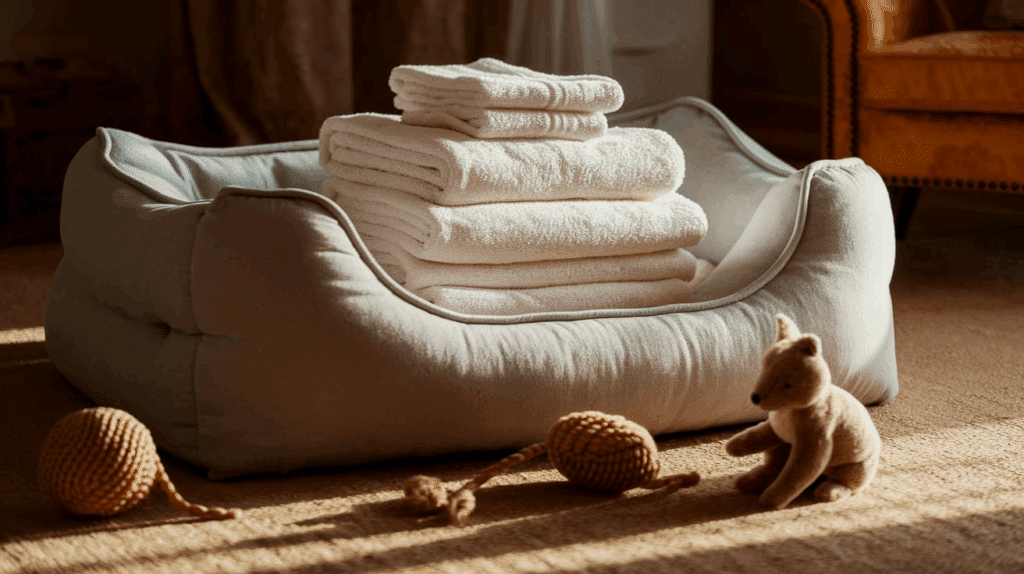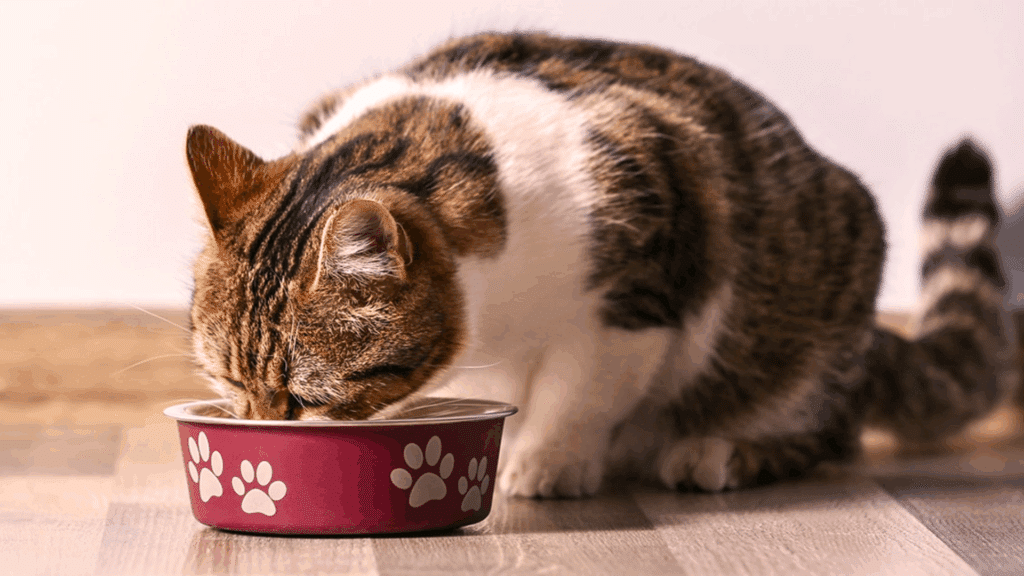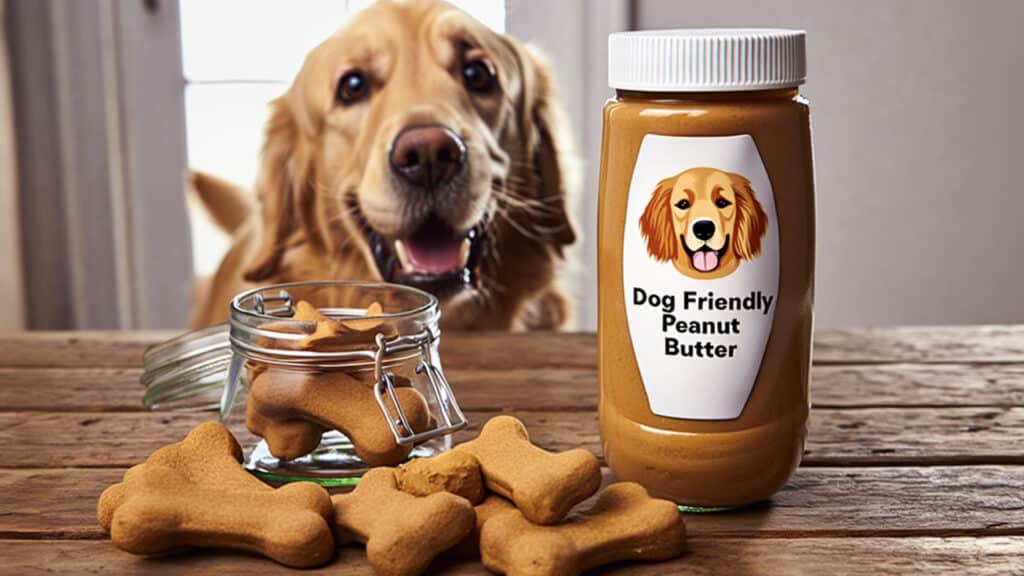Keeping my dog’s bed clean is something I take seriously, and it should be for every pet owner. Washing dog beds regularly isn’t just about looking neat-it’s about hygiene.
Dogs spend a significant amount of time sleeping, rolling, and snuggling in their beds, which allows hair, dirt, allergens, and bacteria to accumulate quickly.
I know some people worry about damaging the bed or the washing machine, and that’s a valid concern.
But with the right steps, I’ve found it’s completely safe to clean most dog beds without any trouble. Regular washing keeps the bed fresh, your dog healthy, and even extends the life of the bed.
In this guide, I’ll walk you through safe, easy ways to keep your dog’s bed clean and comfy.
Is It Safe to Wash a Dog Bed in a Washing Machine?
It’s generally safe to wash a dog bed in a washing machine, but it depends on the material and design.
Beds with removable covers are the easiest to clean this way, just unzip and toss the cover in the wash.
Many soft or plush beds can also go in the washer if the care label says it’s okay. Always double-check those instructions before starting.
However, foam, memory foam, and orthopedic beds shouldn’t go in the machine. The agitation can damage the foam and even strain your washer.
If the bed is machine-washable, use cold water, a gentle cycle, and mild detergent.
This keeps the bed fresh without ruining its fabric or filling. Machine washing is best reserved for beds built to handle it.
Preparing Your Dog Bed for the Washing Machine
Before tossing your dog bed into the washing machine, a little preparation can make cleaning easier and help your bed last longer. Follow these simple steps:
- Remove loose hair and debris: Use a vacuum, lint roller, or brush to remove pet hair, dirt, and crumbs from the bed.
- Check the care label for manufacturer instructions: Always read the tag to see the recommended washing method, water temperature, and detergent type.
- Separate covers from inserts if possible: Removing the cover from the inner stuffing helps both pieces wash more thoroughly and prevents damage to foam or padding.
Step-By-Step Guide to Machine-Washing a Dog Bed
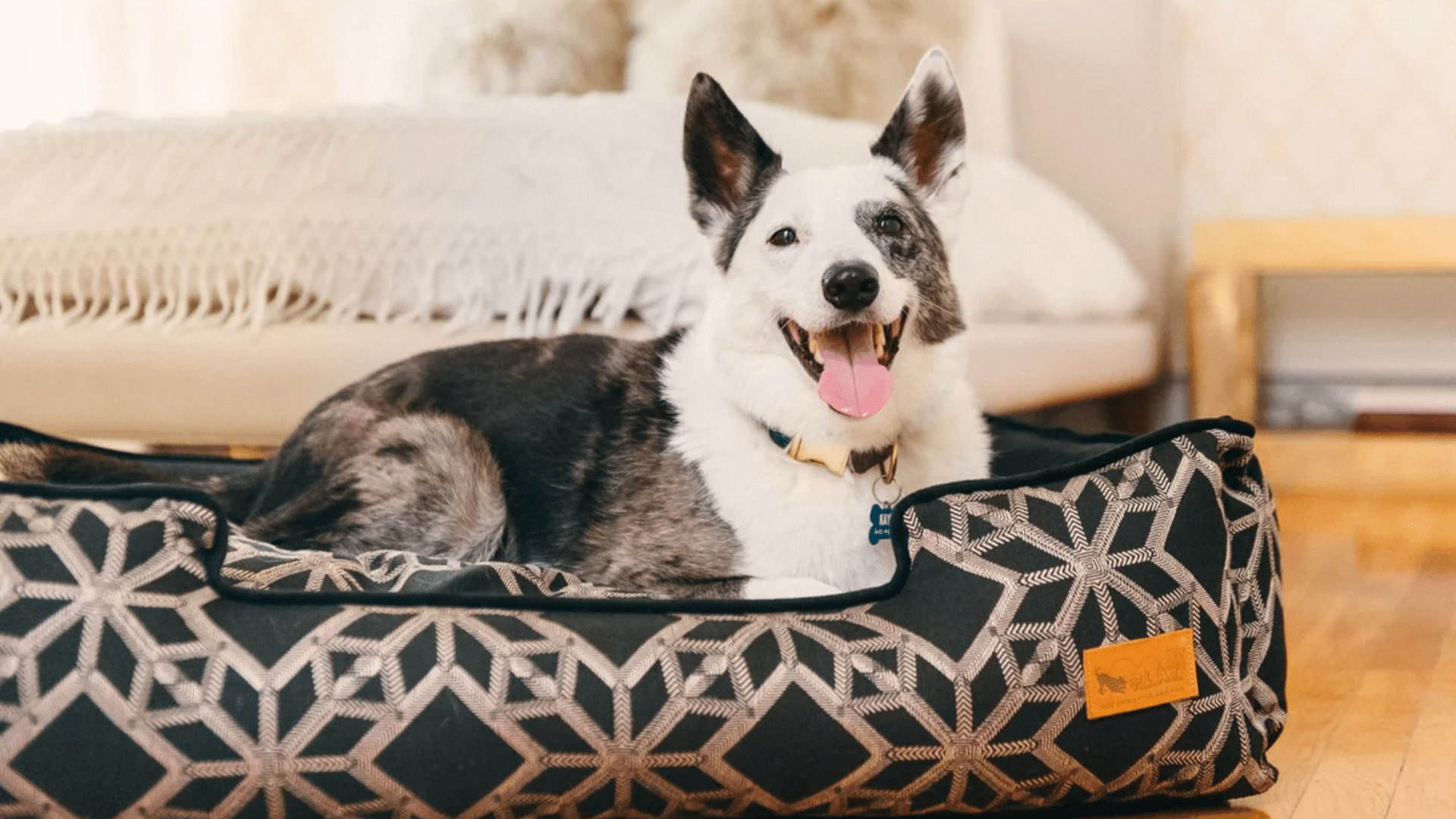
Washing your dog’s bed in the machine is easy if you follow the right steps. Each step ensures a thorough clean without damaging the bed or your washer.
1. Check the Label
Before I start, I always check the care label on the dog bed. It tells you if the bed is safe for the washing machine and which settings to use. Some beds allow warm water, while others require cold water.
If the label says “hand wash only” or “spot clean,” it’s best not to risk machine washing.
I also inspect the seams and zippers to make sure nothing’s coming loose. This step might seem small, but it helps you avoid tearing the fabric or damaging your machine.
Reading the label first saves time and keeps the bed in good shape for longer.
2. Remove Hair and Debris
Before washing, I use a lint roller or vacuum to remove loose fur, crumbs, and dirt. You can also shake the bed outside or brush it gently to loosen stuck-on hair.
Doing this makes washing more effective and keeps pet hair from sticking inside your washer or on other clothes.
I even run a damp rubber glove over the surface, and it grabs fur easily.
Cleaning off debris first prevents clogs and helps your dog bed come out cleaner and fresher after washing. It’s a simple step that makes a big difference.
3. Take Off the Cover
If your dog bed has a removable cover, unzip it and take it off before washing. I always separate the cover from the inner filling because they need different cleaning methods.
The cover usually handles machine washing well, while the insert might need spot cleaning or hand washing.
I like to check for hidden dirt around the zipper and corners since these spots trap fur and odor. Taking off the cover also helps everything dry faster and reduces the chance of mold or lingering smells.
4. Pre-Treat Stains and Odors
Before tossing it in the machine, I pre-treat stains and smells with a mix of mild detergent and warm water. I gently scrub the stained areas using a soft brush or sponge.
For strong odors, you can add a little baking soda, which works well to neutralize smells.
I let it sit for 10–15 minutes before washing. Pre-treating makes a big difference, especially if your dog’s bed has old stains or smells from drool, mud, or accidents.
5. Use the Right Cycle and Detergent
I always choose a gentle cycle with cold or warm water to protect the fabric and stitching. Using a mild, fragrance-free detergent helps avoid irritating your dog’s skin.
Avoid bleach or fabric softeners since they can damage the material and leave strong scents.
I make sure the washer isn’t overloaded so water and detergent circulate properly. A slower spin speed also prevents heavy beds from twisting or tearing.
This careful approach gets the bed clean while keeping it in good condition.
6. Dry the Bed Completely
After washing, I dry the bed thoroughly to stop mold and mildew from forming. If the label allows, I tumble dry it on low heat with a few clean tennis balls to keep the filling fluffy.
For foam or thick padding, I air-dry it flat in a sunny, well-ventilated spot. I flip it every few hours to ensure it dries evenly.
Never skip this step; any leftover moisture can lead to bad smells or bacterial growth.
7. Reassemble and Fluff
Once the bed is dry, I put everything back together carefully. I insert the filling back into the cover and zip it up. Then I shake and fluff the bed to restore its shape and softness.
If your dog’s bed still feels damp or smells musty, let it air out a bit longer.
I like to finish by giving it a quick spray with pet-safe fabric freshener. Your dog will love the clean, cozy spot, and you’ll enjoy the fresh smell in your home.
Alternative Ways to Clean a Dog Bed
If you don’t want to use a washing machine, there are other safe ways to keep your dog’s bed clean. These methods are gentle on the bed and effective at removing dirt, stains, and odors.
- Hand washing method (soaking, scrubbing, rinsing): Fill a tub or sink with warm water and mild, pet-safe detergent. Soak the bed, gently scrub any dirty areas, and rinse thoroughly until no soap remains.
- Spot cleaning for minor stains: For small messes, use a damp cloth and mild detergent to clean only the affected area. This avoids washing the entire bed every time.
- Using pet-safe cleaning sprays for odor removal: Sprays designed for pets can neutralize smells without harsh chemicals, keeping the bed fresh between washes.
How Often Should You Wash Your Dog Bed?
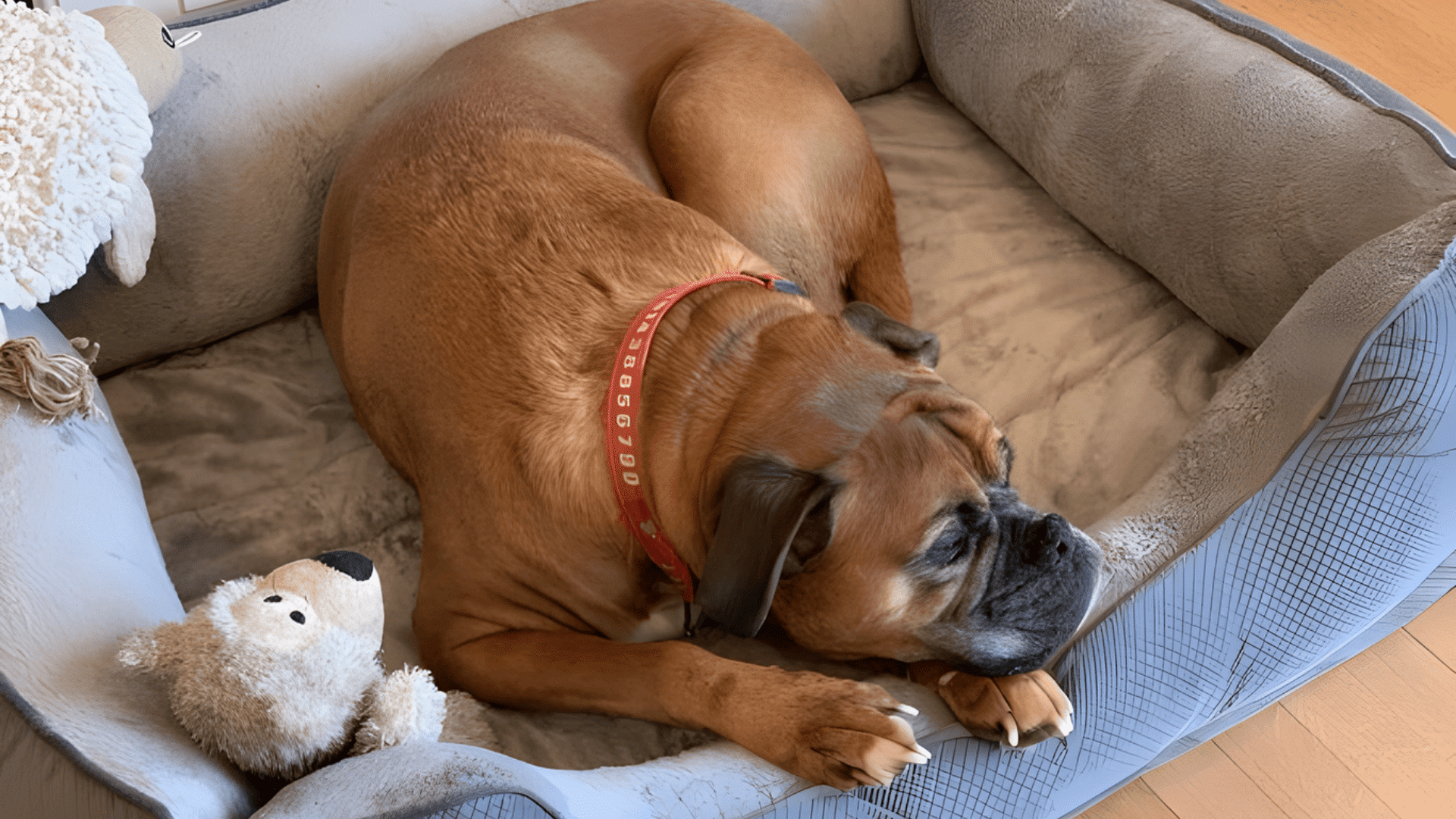
The frequency of washing your dog’s bed depends on several factors. Dog size, shedding, and whether the dog is used indoors or outdoors all play a role.
Big dogs or heavy shedders leave more hair, dirt, and odor on their beds, so they need cleaning more often.
Dogs that spend time outside may track in mud, dirt, or allergens, which also means the bed needs washing more often.
For most dogs, a general washing schedule is about once every 1–2 weeks for heavily used beds.
For smaller dogs or beds that stay mostly indoors, washing once a month may be enough. Regular cleaning keeps the bed fresh, comfy, and healthy for your dog.
Common Mistakes to Avoid when Washing a Dog Bed
Washing your dog’s bed seems simple, but a few common mistakes can ruin the bed or make it unsafe for your pet. Avoid these errors to keep the bed clean, comfortable, and long-lasting.
- Overloading the washing machine: Putting a large or heavy bed in a full machine can prevent proper cleaning and may damage the washer. Wash in smaller loads if needed.
- Using harsh detergents or bleach: Strong chemicals can irritate your dog’s skin and damage the bed’s fabric or filling. Always use mild, pet-safe detergent.
- Not drying completely before use: A damp bed can foster the growth of mold or bacteria, which is unhealthy for your dog.
By avoiding these mistakes, you ensure a safe, fresh, and comfy bed every time.
Conclusion
Keeping your dog’s bed clean doesn’t have to be complicated.
From machine washing with gentle cycles to hand washing and spot cleaning, there are safe ways to keep the bed fresh and comfy.
I always remind myself that regular cleaning is not just about a clean bed- it’s about hygiene and your dog’s health. A well-maintained bed also lasts longer, saving you money and keeping your furry friend happy.
Before you start washing, always check the care label and follow the manufacturer’s instructions.
I’ve found that paying attention to these small details- like using pet-safe detergent, avoiding high heat, and drying thoroughly- makes a huge difference.
With a little care, your dog’s bed can stay soft, cozy, and safe for years.


